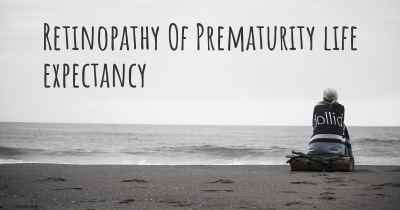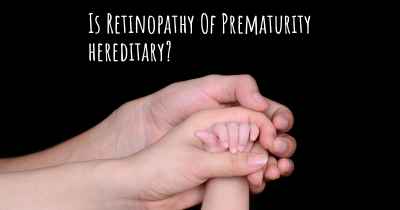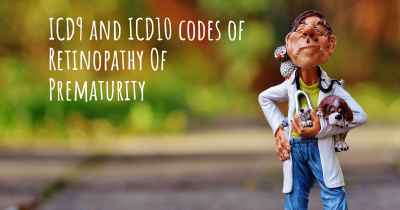18
What is the prevalence of Retinopathy Of Prematurity?
How many people does Retinopathy Of Prematurity affect? Does it have the same prevalence in men and women? And in the different countries?

Retinopathy of Prematurity (ROP) is a common eye disorder affecting premature infants. The prevalence of ROP varies depending on the gestational age and birth weight of the infants. Studies have shown that ROP affects approximately 50-80% of infants born before 30 weeks of gestation. However, the prevalence decreases to 10-20% for infants born between 30-32 weeks of gestation. It is crucial for premature infants to receive regular eye examinations to detect and manage ROP, as it can lead to vision impairment or blindness if left untreated.
Retinopathy of Prematurity (ROP) is a potentially blinding eye disorder that primarily affects premature infants. It occurs when the blood vessels in the retina, the light-sensitive tissue at the back of the eye, do not develop properly. ROP is a significant concern in neonatal care, particularly for babies born before 31 weeks of gestation or weighing less than 1500 grams.
The prevalence of ROP varies depending on several factors, including the level of neonatal care and the population studied. Globally, ROP affects an estimated 14% of preterm infants, making it a considerable health issue. However, the prevalence can be higher in certain regions or specific populations. For instance, in developed countries with advanced neonatal care, the prevalence is around 15-20% among very preterm infants. In contrast, in low-income countries with limited resources, the prevalence can exceed 50%.
Early detection and appropriate management are crucial in preventing vision loss due to ROP. Regular eye examinations by ophthalmologists are recommended for at-risk infants to identify and treat ROP at the earliest stages. The prevalence of Retinopathy of Prematurity underscores the importance of comprehensive neonatal care and ongoing research to improve outcomes for these vulnerable infants.
Diseasemaps
What is retinopathy of prematurity?
Retinopathy of prematurity (ROP) is a potentially blinding eye disorder that primarily affects premature infants weighing about 2¾ pounds (1250 grams) or less that are born before 31 weeks of gestation (A full-term pregnancy has a gestation of 38–42 weeks). The smaller a baby is at birth, the more likely that baby is to develop ROP. This disorder—which usually develops in both eyes—is one of the most common causes of visual loss in childhood and can lead to lifelong vision impairment and blindness. ROP was first diagnosed in 1942.
Frequently Asked Questions about Retinopathy of Prematurity
How many infants have retinopathy of prematurity?
Today, with advances in neonatal care, smaller and more premature infants are being saved. These infants are at a much higher risk for ROP. Not all babies who are premature develop ROP. There are approximately 3.9 million infants born in the U.S. each year; of those, about 28,000 weigh 2¾ pounds or less. About 14,000–16,000 of these infants are affected by some degree of ROP. The disease improves and leaves no permanent damage in milder cases of ROP. About 90 percent of all infants with ROP are in the milder category and do not need treatment. However, infants with more severe disease can develop impaired vision or even blindness. About 1,100–1,500 infants annually develop ROP that is severe enough to require medical treatment. About 400–600 infants each year in the US become legally blind from ROP.
Are there different stages of ROP?
Yes. ROP is classified in five stages, ranging from mild (stage I) to severe (stage V):
Stage I — Mildly abnormal blood vessel growth. Many children who develop stage I improve with no treatment and eventually develop normal vision. The disease resolves on its own without further progression.
Stage II — Moderately abnormal blood vessel growth. Many children who develop stage II improve with no treatment and eventually develop normal vision. The disease resolves on its own without further progression.
Stage III — Severely abnormal blood vessel growth. The abnormal blood vessels grow toward the center of the eye instead of following their normal growth pattern along the surface of the retina. Some infants who develop stage III improve with no treatment and eventually develop normal vision. However, when infants have a certain degree of Stage III and “plus disease” develops, treatment is considered. “Plus disease” means that the blood vessels of the retina have become enlarged and twisted, indicating a worsening of the disease. Treatment at this point has a good chance of preventing retinal detachment.
Stage IV — Partially detached retina. Traction from the scar produced by bleeding, abnormal vessels pulls the retina away from the wall of the eye.
Stage V — Completely detached retina and the end stage of the disease. If the eye is left alone at this stage, the baby can have severe visual impairment and even blindness.
Most babies who develop ROP have stages I or II. However, in a small number of babies, ROP worsens, sometimes very rapidly. Untreated ROP threatens to destroy vision.
Retinopathy of prematurity (ROP) is a potentially blinding eye disorder that primarily affects premature infants weighing about 2¾ pounds (1250 grams) or less that are born before 31 weeks of gestation (A full-term pregnancy has a gestation of 38–42 weeks). The smaller a baby is at birth, the more likely that baby is to develop ROP. This disorder—which usually develops in both eyes—is one of the most common causes of visual loss in childhood and can lead to lifelong vision impairment and blindness. ROP was first diagnosed in 1942.
Frequently Asked Questions about Retinopathy of Prematurity
How many infants have retinopathy of prematurity?
Today, with advances in neonatal care, smaller and more premature infants are being saved. These infants are at a much higher risk for ROP. Not all babies who are premature develop ROP. There are approximately 3.9 million infants born in the U.S. each year; of those, about 28,000 weigh 2¾ pounds or less. About 14,000–16,000 of these infants are affected by some degree of ROP. The disease improves and leaves no permanent damage in milder cases of ROP. About 90 percent of all infants with ROP are in the milder category and do not need treatment. However, infants with more severe disease can develop impaired vision or even blindness. About 1,100–1,500 infants annually develop ROP that is severe enough to require medical treatment. About 400–600 infants each year in the US become legally blind from ROP.
Are there different stages of ROP?
Yes. ROP is classified in five stages, ranging from mild (stage I) to severe (stage V):
Stage I — Mildly abnormal blood vessel growth. Many children who develop stage I improve with no treatment and eventually develop normal vision. The disease resolves on its own without further progression.
Stage II — Moderately abnormal blood vessel growth. Many children who develop stage II improve with no treatment and eventually develop normal vision. The disease resolves on its own without further progression.
Stage III — Severely abnormal blood vessel growth. The abnormal blood vessels grow toward the center of the eye instead of following their normal growth pattern along the surface of the retina. Some infants who develop stage III improve with no treatment and eventually develop normal vision. However, when infants have a certain degree of Stage III and “plus disease” develops, treatment is considered. “Plus disease” means that the blood vessels of the retina have become enlarged and twisted, indicating a worsening of the disease. Treatment at this point has a good chance of preventing retinal detachment.
Stage IV — Partially detached retina. Traction from the scar produced by bleeding, abnormal vessels pulls the retina away from the wall of the eye.
Stage V — Completely detached retina and the end stage of the disease. If the eye is left alone at this stage, the baby can have severe visual impairment and even blindness.
Most babies who develop ROP have stages I or II. However, in a small number of babies, ROP worsens, sometimes very rapidly. Untreated ROP threatens to destroy vision.
Posted Jun 10, 2017 by Josie 2150
As neonatologist advances are made, more babies under 2# will survive. So the ROP rate will increase. Hopefully science will keep up and discover a cure or a very good work around.
Posted Sep 11, 2017 by Suzette 1850








